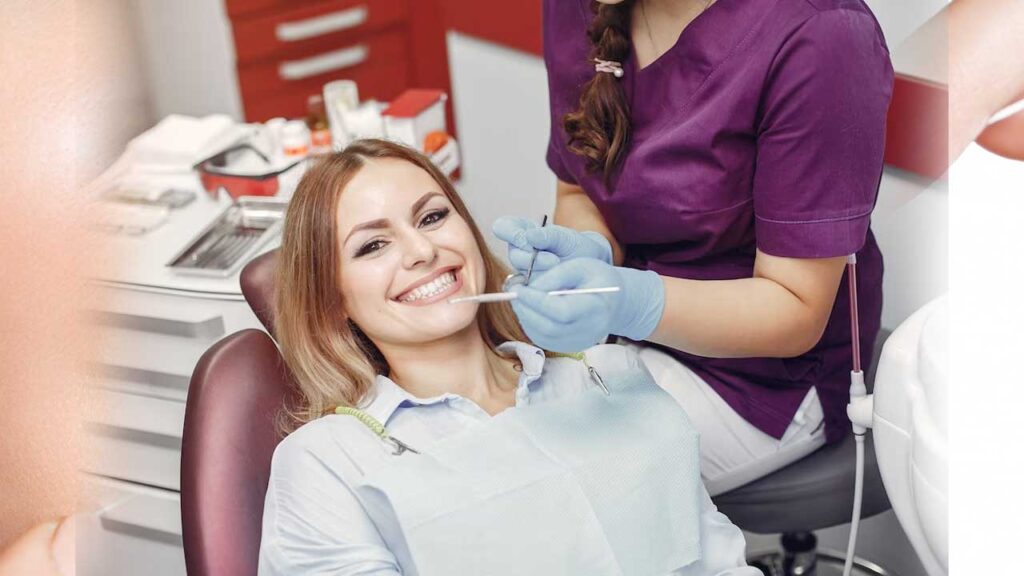Interdental brushes are small brushes that are designed to clean between your teeth, where regular toothbrushes cannot reach. They are also known as interproximal brushes or proxy brushes. They can help remove plaque, food debris, and bacteria from your interdental spaces, which are the gaps between your teeth.
Interdental brushes are one of the most effective interdental cleaning devices available. They can improve your oral hygiene, gum health, and prevent dental problems such as caries and periodontal disease. In this article, we will explore the science behind interdental brushes and their effectiveness. You will learn:

- How interdental brushes work and why they are important
- How to choose and use interdental brushes correctly
- What are the benefits of interdental brushes for your oral health?
- How interdental brushes compare with other interdental cleaning devices
- What are the best practices for interdental brushing?
By reading this article, you will gain valuable and right information about interdental brushes that will help you improve your oral health and smile.
How Interdental Brushes Work and Why They Are Important
Interdental brushes work by gently sliding between your teeth and removing plaque, food debris, and bacteria that may be stuck there. Plaque is a sticky film that forms on your teeth every day. It contains millions of bacteria that can cause tooth decay, gum inflammation, bad breath, and other dental problems.
If plaque is not removed regularly by brushing and flossing, it can harden into tartar, which is a yellow or brown substance that sticks to your teeth. Tartar can only be removed by a dental professional. It can also irritate your gums, causing them to bleed or recede. This can lead to periodontal disease, which is a serious infection of the tissues that support your teeth. Periodontal disease can cause tooth loss, bone loss, and other complications.
Interdental brushing can help prevent plaque and tartar buildup by cleaning the areas that are often missed by regular toothbrushes. According to a study published in the Journal of Clinical Periodontology, interdental brushes were more effective than floss in removing plaque from between teeth.
Interdental brushing can also help prevent interproximal caries, which are cavities that form between your teeth. These cavities are hard to detect and treat because they are hidden from view. They can cause pain, sensitivity, infection, and tooth loss if left untreated.
Interdental brushing can help prevent interproximal caries by removing food particles and bacteria that may cause tooth decay. According to a study published in the Journal of Dentistry, interdental brushing reduced the risk of developing new interproximal caries by 52% compared with no interdental cleaning.
How to Choose and Use Interdental Brushes Correctly
To choose the right interdental brush for you, you need to consider the size, shape, and material of the brush. The size of the brush should match the size of your interdental spaces. If the brush is too small, it will not clean effectively. If the brush is too large, it will not fit between your teeth or may cause damage to your gums.
The shape of the brush can be cylindrical, conical, or tapered. The shape of the brush should match the shape of your interdental spaces. Cylindrical brushes are suitable for spaces that are uniform in size. Conical brushes are suitable for spaces that are wider at the gum line and narrower at the tip. Tapered brushes are suitable for spaces that vary in size.
The material of the brush can be metal, plastic, or rubber. The material of the brush should be gentle on your teeth and gums. Metal brushes are durable and can bend to fit different angles. Plastic brushes are softer and can prevent scratching your teeth. Rubber brushes are flexible and can massage your gums.
To use interdental brushes correctly, you need to follow these steps:
- Choose an interdental brush that fits comfortably between your teeth. You may need different sizes for different areas of your mouth.
- Hold the interdental brush between your thumb and forefinger. Do not use too much force or pressure.
- Gently insert the interdental brush between two teeth. Do not force it or push it too far.
- Move the interdental brush back and forth a few times to clean the surfaces of both teeth.
- Rinse the interdental brush with water after each use.
- Repeat the process for all the interdental spaces in your mouth.
- Replace the interdental brush when it becomes worn or damaged.
You should use interdental brushes at least once a day, preferably before bedtime. You can use them before or after brushing your teeth with a regular toothbrush. You can also use them with toothpaste, mouthwash, or other products that contain active substances, such as fluoride or chlorhexidine, to enhance their effectiveness.
What Are the Benefits of Interdental Brushes for Your Oral Health?
Interdental brushes have many benefits for your oral health, such as:
- Improving your oral hygiene by removing plaque and bacteria from between your teeth
- Preventing dental problems such as caries, gingivitis, periodontitis, and bad breath
- Improving your gum health by reducing inflammation, bleeding, and recession
- Improving your tooth health by preventing decay, sensitivity, and loss
- Improving your smile by making your teeth look cleaner and brighter
- Improving your overall health by reducing the risk of systemic diseases that are linked to poor oral health, such as diabetes, cardiovascular disease, and respiratory infections
Interdental brushes can also improve your quality of life by making you feel more confident and comfortable with your oral health. According to a study published in the Journal of Oral Rehabilitation, interdental brushing improved the oral health-related quality of life of patients with periodontal disease.
How Interdental Brushes Compare with Other Interdental Cleaning Devices
Interdental brushes are not the only interdental cleaning devices available. There are other devices that can help you clean between your teeth, such as:
- Dental floss: This is a thin thread that you slide between your teeth to remove plaque and food debris. Dental floss can be waxed or unwaxed, flavored or unflavored, thick or thin.
- Water flossers: These are devices that use pressurized water to clean between your teeth and below your gum line. Water flossers can have different tips, settings, and reservoirs.
- Interdental picks: These are thin plastic or metal tools that have a pointed tip that can be used to scrape off plaque and tartar from your teeth. Interdental picks can be disposable or reusable.
- Dental sticks: These are wooden or plastic sticks that have a triangular shape that can fit between your teeth. Dental sticks can help remove plaque and stimulate your gums.
How do interdental brushes compare with these other devices? Which one is better for you? The answer depends on several factors, such as:
- Your personal preference: You should choose a device that you are comfortable with and enjoy using. For example, some people may prefer a water flosser over dental floss because it is easier and faster to use. Some people may prefer an interdental pick over an interdental brush because it is cheaper and more convenient.
- Your oral health condition: You should choose a device that suits your oral health condition and needs. For example, some people may need a water flosser over dental floss because they have braces or implants that make flossing difficult. Some people may need an interdental brush over an interdental pick because they have large interdental spaces that require more cleaning.
- Your dentist’s recommendation: You should consult your dentist before choosing any interdental cleaning device. Your dentist can advise you on the best device for your oral health condition and goals. They can also teach you how to use the device correctly and safely.
According to a systematic review published in the Journal of Periodontology, interdental brushes were more effective than dental floss, water flossers, interdental picks, and dental sticks in reducing plaque and gingivitis. However, the review also noted that the evidence was low-quality and more research is needed to compare the effectiveness of different interdental cleaning devices.
Therefore, you should not rely on one device alone, but use a combination of devices that suit your needs and preferences. You should also use them along with regular toothbrushing and professional dental care.
What Are the Best Practices for Interdental Brushing?
To get the most out of interdental brushing, you should follow these best practices:
- Use interdental brushes at least once a day, preferably before bedtime.
- Choose an interdental brush that fits comfortably between your teeth. You may need different sizes for different areas of your mouth.
- Hold the interdental brush between your thumb and forefinger. Do not use too much force or pressure.
- Gently insert the interdental brush between two teeth. Do not force it or push it too far.
- Move the interdental brush back and forth a few times to clean the surfaces of both teeth.
- Rinse the interdental brush with water after each use.
- Repeat the process for all the interdental spaces in your mouth.
- Replace the interdental brush when it becomes worn or damaged.
Interdental brushes are small brushes that are designed to clean between your teeth, where regular toothbrushes cannot reach. They can help remove plaque, food debris, and bacteria from your interdental spaces, which are the gaps between your teeth.
Interdental brushes are one of the most effective interdental cleaning devices available. They can improve your oral hygiene, gum health, and prevent dental problems such as caries and periodontal disease.
In this article, we have explored the science behind interdental brushes and their effectiveness. We have also provided you with tips on how to choose and use interdental brushes correctly, what are the benefits of interdental brushes for your oral health, how interdental brushes compare with other interdental cleaning devices, and what are the best practices for interdental brushing.
We hope you have found this article useful and informative. If you have any questions or need more assistance, please contact your dentist or dental hygienist.
